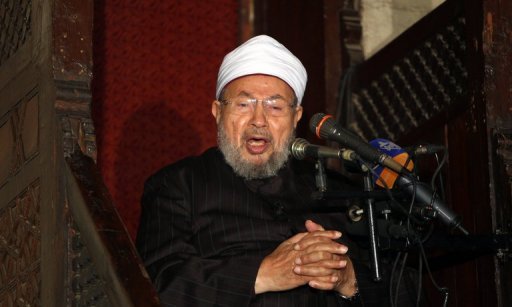
By Lansana Gberie
On 27 November 1995, a calm voice issued this jarring statement on the BBC: “Abacha is sitting on a volcano. And I am going to explode it underneath him.” It belonged to Nelson Mandela. He was 77, and had already been president of South Africa for a year. Mandela was referring to General Sani Abacha, an obdurate and corrupt dictator in Nigeria who, in addition to still holding the winner of his country’s presidential election in solitary confinement, had just executed the writer and environmentalist Ken Saro-Wiwa and eight other activists from oil-blighted Ogoniland. The nine had been condemned by a military tribunal.
Mandela was angry; Abacha had rebuffed Mandela’s studiously private and civilised appeal for the release of Saro-Wiwa and his fellow activists. By doing so, Abacha had drawn the battle line, stoking the fiery passion for justice still burning in the breast of the aged champion of freedom: to his end Mandela lived by the dictum, which he articulated with great eloquence at his trial at Rivonia in 1964, that though he abhorred violence, he was willing to employ it to fight “tyranny, exploitation, and oppression”.
Mandela had to back down from his hard-line stance against Abacha amidst pressure from the “realists” in his government who were concerned that a newly liberated South Africa was on a collision course with some of those who had been among the staunchest backers of his African National Congress (ANC) during the terrible years of apartheid.
It was this vision that saw him in 1961 travel to almost all of independent Africa, drumming up support for his fledging armed struggle; it was out of this experience that he settled on his great legacy for the world: reconciliation and redistributive, rather than retributive, justice after the experience of tyranny and war—what has now (somewhat uneasily) become the sprawling and protean field of transitional justice. “I have done whatever I did, both as an individual and as a leader of my people,” Mandela told the judges at his trial at Rivonia on 20 April 1964, “because of my experience in South Africa and my own proudly felt African background, and not because of what any outsider might have said.”
He was not and never wanted to be seen as a pacifist: for him freedom and justice were worth fighting and dying for. His harsh journey from prison to the presidency enabled him to pursue his vision, which afterward needed to be broadly applied across Africa. The government of Abacha, secure in oil wealth and facing a fractured opposition whose leadership preferred comfortable exile to the necessary task of national leadership, was the first setback to Mandela’s vision in 1995. The following year he was appointed chair of the Southern African Development Community (SADC), a regional economic bloc, and that brought him to confront an even more onerous problem: Zaire (now the Democratic Republic of Congo) was fast sliding into chaos under its long-term kleptocrat, Mobutu Sese Seko. Nothing could stop this slide, and the problems of that massive, unwieldy country still remain largely unresolved.
Such setbacks tested the nerve of the old warrior, so that when an electoral crisis in tiny Lesotho, which looks like a dot inside South Africa on a map, threatened to lead to a civil war in September 1998, Mandela quickly authorised military intervention. Though unpopular and messy—the South African forces, never completely weaned of the brutality of their past, sometimes carried out gratuitous attacks on civilians and local infrastructure—the intervention did succeed in preventing civil war.
It was, however, Mandela’s work on Burundi that assures his legacy as a peacemaker in Africa. Aging and in poor health, Mandela took over in December 1999 the position of chief negotiator of the long-running conflict in Burundi, after the death of Julius Nyerere, the erstwhile holder of the position.
Peace, like freedom, like democracy, in Mandela’s clear-sighted and dignified vision, is a positive attribute: the conditions for its full enjoyment must be established before it is possible. This vision recalled his address to his judges at Rivonia in 1964: such was his principled consistency. “During my lifetime,” he said, “I have fought against white domination, and I have fought against black domination. I have cherished the ideal of a democratic and free society in which all persons live together in harmony and with equal opportunities.”
Burundi needed this breath of fresh air. Like its far more famous twin, neighbouring Rwanda, the country had been beset by ethnic conflict since gaining independence, first from Belgium as a United Nations Trust Territory on 1 July 1962, and then as a country on 1 July 1966. Communal fighting, mainly along Hutu-Tutsi lines, has led to the death of hundreds of thousands of people over the decades. When the plane carrying Burundi’s President Cyprien Ntaryamira and Rwanda’s President Juvénal Habyarimana (both of them Hutu) was shot down over Kigali on 6 April 1994, widespread ethnic violence exploded once again. It was this event that triggered the genocide in Rwanda. Mandela, not yet in power when the plane was shot down, must have been particularly horrified by the genocide, which tended, in some people’s view, to undercut the great hopes that his election had unleashed for Africa.
Mandela helped hammer out the Arusha Accord that was signed on August 2000, and he caused to be deployed a large South African force to lead African Union peacekeepers in the country. (On 21 May 2004, by its resolution 1545, the UN Security Council established the UN Operation in Burundi (ONUB), which took over leadership of the African Union forces.)
The African Renaissance, an idea popularised by Mandela’s successor Thabo Mbeki and one that Mandela fully supported, has certainly not yet been realised. There are still petty wars and petty tyrannies, not to mention an unequal global economic and political system, holding the continent back. But Mandela’s life and work for the continent suggested that it is possible.

